Are you planning to drive on UK roads for the first time? Whether you’re a resident who has recently passed their test, or you’re in the UK on a temporary basis, you're in good company.
This article is designed for:
- New/learner drivers
- Overseas drivers on holiday in the UK
- Those on a UK business trip
- Those moving to the UK for work or study
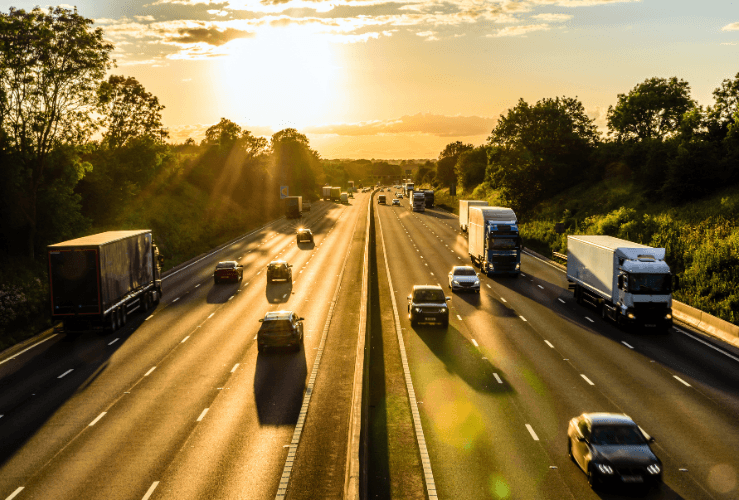
The good news is that the UK has the sixth safest roads in the world, according to a report by Finn.
This is down to stringent regulations, safety-conscious road infrastructure, high vehicle safety standards, and effective law enforcement, among other factors.
But if you're unfamiliar with UK roads, it's important to be aware of the various rules and regulations to stay safe and avoid police fines.
Read on to learn more about UK driving rules.
UK driving requirements: Minimum ages
- You must be at least 17 years old to drive a car in the UK.
- You must be at least 17 years old to ride a motorbike with a cylinder capacity not exceeding 125cc, or power not exceeding 11kW
- You must be at least 19 years old to use a motorbike of 35kW or less
- You must be at least 21 years old to use a motorbike of unlimited power.
Driving in UK tips
- Drive on the left, overtake on the right.
- On motorways and dual carriageways, stay on the left, and overtake on the right; do not 'hog' the middle lane.
It is recommended you carry:
- A first aid kit
- A warning triangle (not for use on motorways)
- High visibility jacket
- Fire extinguisher
Do not:
- Use a hand-held phone or comparable electronic device
- Use the horn while the vehicle is stationary - unless to warn another vehicle of danger/collision, or when used as part of the anti-theft system
- Use the horn in built-up/residential areas (except in emergencies as above) from 23:30 to 07:00
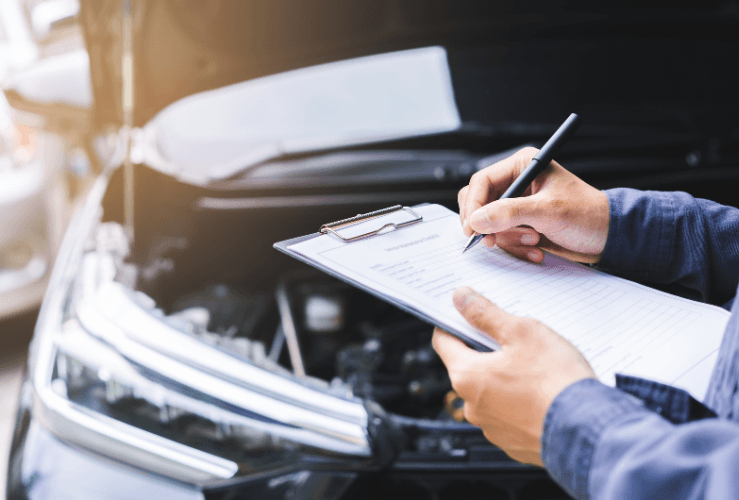
Do I need an MOT?
If you live outside the UK and your vehicle is roadworthy and registered to a non-UK address, you don’t need to have passed an MOT (Ministry of Transport) test.
But if your vehicle is registered with the DVLA at a UK address and is over three years old (but under 40 years’ old - see below), your vehicle will need to have a valid MOT certificate.
Owners of classic cars (“built or first registered more than 40 years ago”) can apply for exemption, as long as no ‘substantial changes’ have been made in the last 30 years. However, it’s advisable to have an MOT carried out to ensure the vehicle is roadworthy.
Do I need road tax (VED)?
For vehicles registered overseas, you’ll need to pay road tax based on your vehicle list price, age, emissions etc., if is used in the UK for six months or more (i.e., you are exempt if you do not plan to live in the UK permanently).
If your vehicle was bought in the UK and registered to a UK address, you will need to pay road tax to drive on public roads.
Check you are insured to drive in the UK
Any car driven on a UK public highway must have at least third party motor insurance. Many car insurance policies bought for vehicles primarily driven in the EU include some component for driving in other countries, including the UK.
However, it is important to check you are covered to drive in the UK. Some basic policies may only provide cover for a short period.
If your existing cover does not cover driving in the UK, you can take out temporary cover.
But if you are renting a car in the UK, you won't need to worry about taking out cover, since it is invariably included in the rental cost.
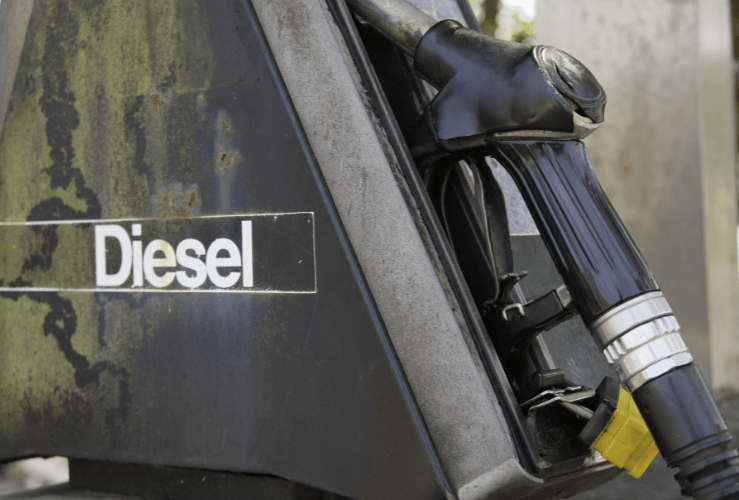
Know your fuel types
The common types of fuel available from fuel stations in the UK are:
- Unleaded E10/95-octane petrol ("premium unleaded")
- Unleaded 97/98 octane petrol ("super unleaded")
- Premium fuels e.g. Shell V-Power
- City diesel (often just labelled “diesel")
- Premium diesel
- LPG - liquified petroleum gas (available in about 1400 stations). Ensure you bring a suitable LPG connector for filling up, since UK fuel stations do not generally have them available.
Note: If you drive an older vehicle that uses leaded fuel, you may need to buy lead replacement additives so that the commonly-available petrol will work.
How to save: One of the best driving-in-UK tips for saving money on fuel is to use supermarket fuel stations, since they are often cheaper than major firms like BP and Shell.
Is UK fuel expensive?
The cost of petrol and diesel varies across the UK by area, brand, and fuel grade. E5 Superplus, which is sold across Europe, is comparable to the UK's super unleaded.
According to Autotraveller, the UK is the most expensive place to buy this popular fuel type at the time of writing, so ensure you budget accordingly.
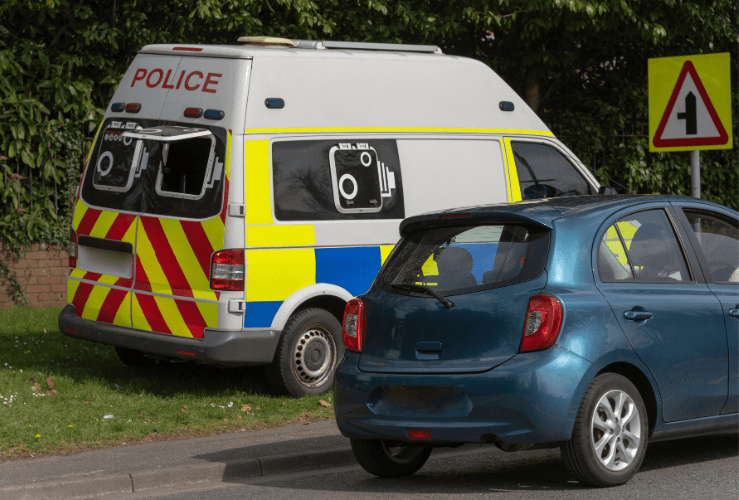
What are the speed limits in the UK?
Among UK driving rules, speed limits are crucial to know.
Speed cameras are common nationwide, so speeding could be an expensive mistake.
For most ordinary vehicles without trailers, UK speed limits are as follows:
- ‘Twenty's plenty’ areas: Many urban areas in the UK have instituted 20mph/32 km/h limits.
- Built-up areas: 30mph/48km/h
- Non-built-up areas: 60mph/96km/h
- Motorways/dual-carriageways: up to 70 mph/112km/h
Towing a caravan or trailer
These limits are different for cars towing a caravan or trailer:
- 50mph on single carriageways outside built-up areas
- 60mph on dual carriageways and motorways
With these vehicles, the outside lane must not be used on motorways with three or more lanes.
Find out more about towing a caravan safely.
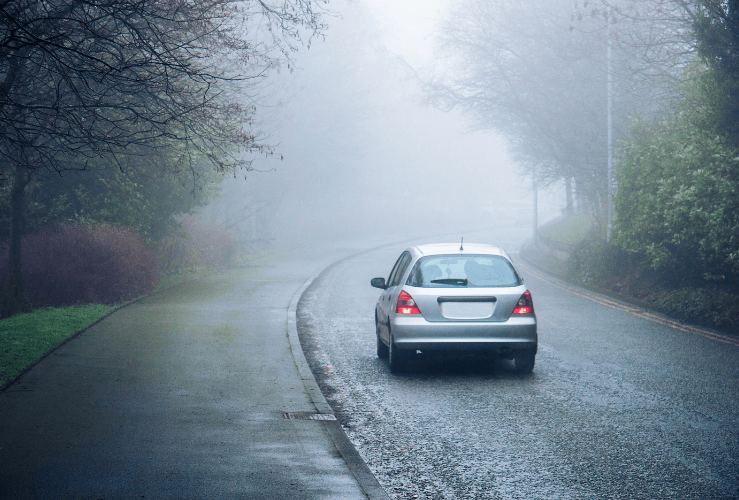
Lights: Staying safe and visible
In the dark, between sunset and sunrise, sidelights must be used. Headlamps must be used at night (beginning 30 minutes after sunset and 30 minutes before sunrise), except where functioning streetlights are being used.
At night in built-up areas, use dipped headlights - unless the road is well lit.
Headlights should be used on lit roads and motorways where the speed limit is over 30mph.
If visibility falls to below 100m, use headlights.
In poor visibility, both front and rear fog lights can be used - but must be turned off as soon as visibility improves.
Ensure you do not use your lights to dazzle other road users, including pedestrians, horse riders, and cyclists. Ensure headlights are set up for driving on the left.
Motorbikes, scooters, and mopeds
A British Standard (BS) approved (or similar) helmet must be worn by riders of motorbikes, scooters, and mopeds. This rule applies to passengers unless they are riding in a sidecar.
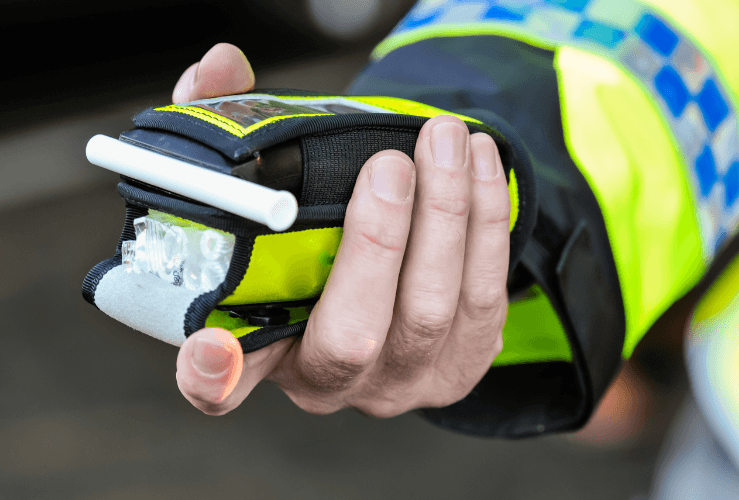
Drink driving limits
Much of the UK actually has slightly more relaxed drink-drive limits than the rest of western Europe, at 0.08%. However, Scotland has a lower limit of 0.05%, which is the same as countries like France and Germany.
The best policy is not to drink at all if you plan to get behind the wheel of a vehicle.
Drink driving penalties
If you are found to be over the applicable drink-drive limit by a police officer, you could face a penalty of up to £5,000 and/or 6 months in prison.
First-time offenders may have their licence withdrawn for 12 months.
Police may also carry out tests for drugs.
If you take medication that may inhibit your ability to drive, ensure you know what the safe dosage is, and keep a prescription with you in your vehicle.
How do UK police collect fines from overseas drivers?
If police have issued a fine to a driver who cannot provide a UK address, the fine must be paid on-the-spot or, depending on the situation, a £300 deposit might be required for any court fine that may result (also paid immediately).
Other fines (e.g. for speeding) may be pursued by a variety of other means, including bilateral agreements between the UK and other countries, or by international debt collection agencies.
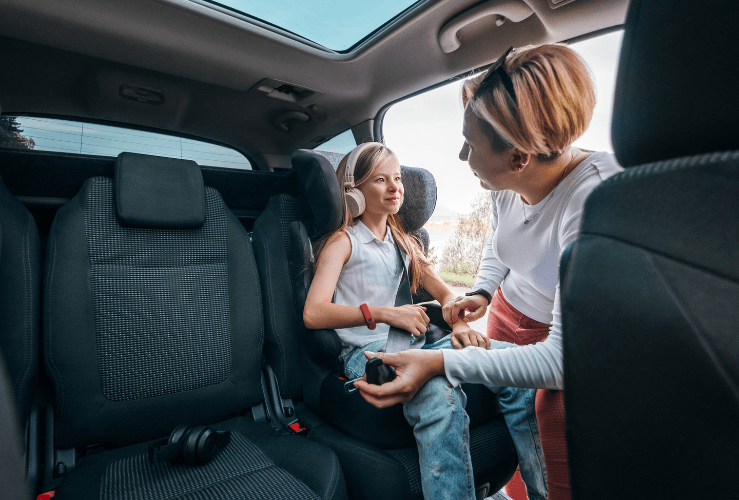
Wearing seat belts
If a vehicle has seat belts installed in front and/or rear, they must be worn by driver and passengers.
Children aged under 3
An appropriate child restraint must be used, based on the age and weight of a child (no matter what the vehicle type).
However, in a taxi, under 3s do not have to wear a restraint if none is available.
Baby seats that face backwards cannot be used in a seat protected by an airbag unless that airbag has been deactivated.
Children aged 3 to 11 (under 135cm high)
In the front seat, an appropriate child restraint must be used at all times.
In the rear, if adult seat belts are installed, a suitable child restraint must be used.
However, a rear adult seat belt can be used in a taxi (if a suitable restraint is not available); for a short/occasional journey if a suitable restraint is not available; and in situations where two restraints are already being used, making a third impossible.
As the driver of the vehicle, you are responsible for ensuring under-14s use suitable seat belts/restraints. Failure to comply could result in fines of up to £500.
Box junctions: How to use them
Box junctions are intersections where up to four roads meet.
The junction itself is a painted yellow box with criss-crossing yellow lines. You must only travel over this box; you must not stop on it.
Do not proceed into a box junction unless there is sufficient space to move into the exit lane.
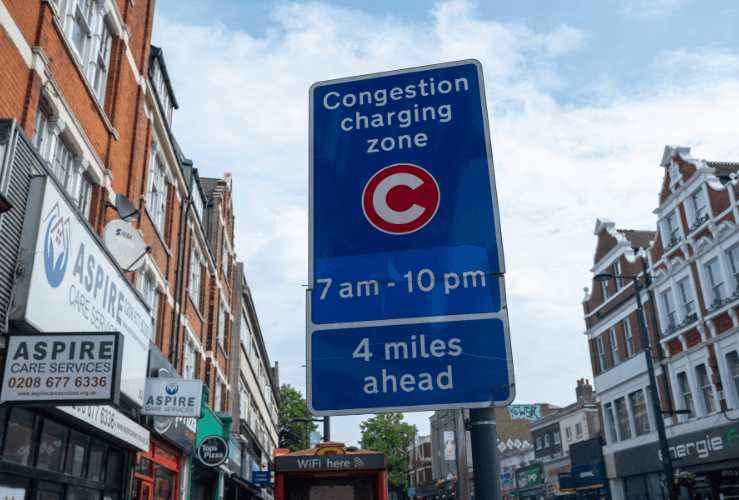
Credit: William - stock.adobe.com
London Congestion Charge
It's important to know about the London Congestion Charge if you plan to drive in or around the UK capital - in order to avoid an unexpected charge.
If you wish to drive in the London Congestion Charge zone of Central London, you must pay £15 per day (advance or on the day), or £17.50 by midnight of the third day after travel. This zone operates Monday to Friday, exclusive of public holidays, from 07:00 to 18:00; there is no charge outside this period.
Look out for a large white 'C' on a red background - this shows you are entering the LCC zone.
London's network of Automatic Number Plate Recognition (ANPR) cameras are used to instantly scan and identify every vehicle that enters the Congestion Charge Zone. Penalty Charge Notices (PCNs) are sent out to the registered address of any vehicle that does not pay the fee.
Exemptions: Cars that emit 75g/km or less of CO2; Zero-emission vehicles; Motor tricycles less than one metre in width/two metres in length.
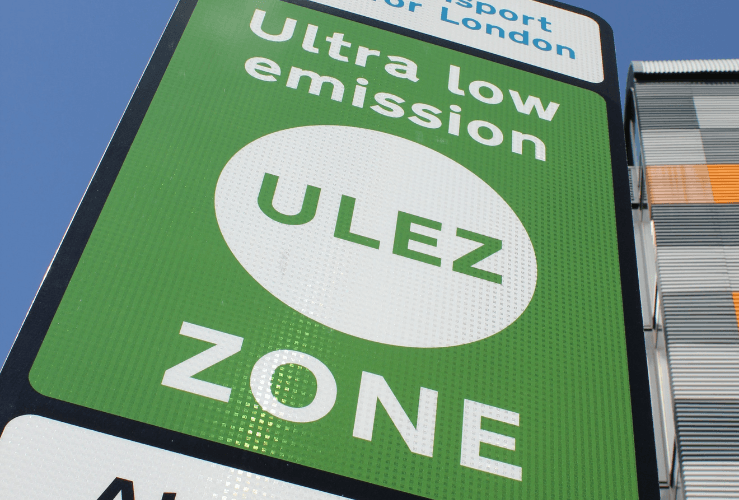
ULEZ: Ultra Low Emissions Zone
It's also important to know about the Ultra Low Emissions Zone charge, which covers a much larger area than the London Congestion Charge zone - i.e., most of Greater London. It costs £12.50 per day to drive in this area.
Unlike the CCZ, it operates 24 hours a day, every day except Christmas day.
You are not required to pay the ULEZ charge if your vehicle falls under one of these categories:
- Petrol cars that meet Euro 4 standards
- Diesel cars that meet Euro 6 standards
- Hybrid cars that meet Euro 4 or Euro 6 standards (depending on the fuel type)
- Electric cars
- Vehicles for disabled people
- Classic cars
- Taxis
LEZ: London Emissions Zone
The London Emission Zone is another zone that attracts a fee, but only if you're driving:
- Large commercial vehicles that weigh more than 3.5 tonnes (except if Euro 6 compliant)
- Minibuses (except if Euro 3 compliant)
- Vans (except if Euro 3 compliant)
- Motor caravans and ambulances (except if Euro 3 compliant)
Dart Charge
If you use the Dartford Crossing towards the east of London, you must pay a toll. This is in effect from 06:00 to 22:00. You can pay it at PayZone outlets, or online: Dartford Crossing Charge.
Learn more about the Dart Charge here.
Other cities with congestion charges
Charges are also levied on certain polluting vehicles in a number of other UK cities, namely: Aberdeen, Birmingham, Bristol, Dundee, Edinburgh, and Glasgow.




